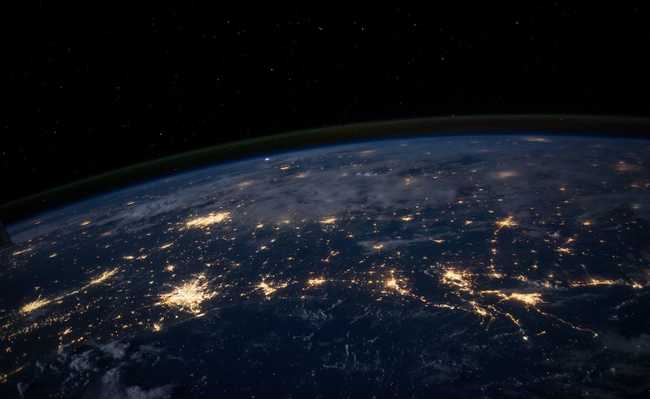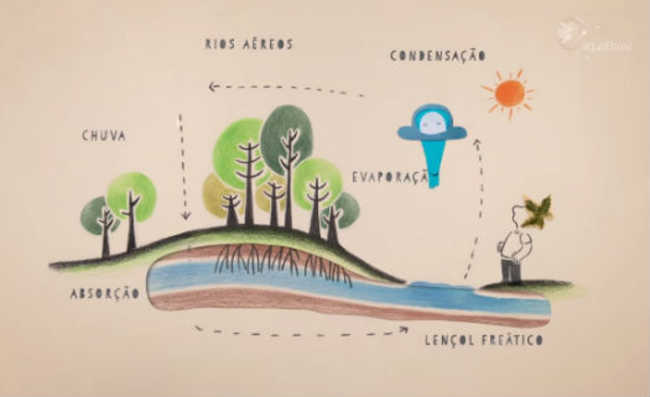Ozone: what is it?
Ozone is a highly reactive and oxidizing gas

Image: Free-Photos by Pixabay
Ozone is a very unstable gas that has three oxygen molecules. This means that it cannot maintain its structure with these three oxygen molecules for a long period of time. Therefore, ozone binds to other molecules, forming other elements very easily.
But do you know what the various roles ozone plays? O eCycle portal shows you.
stratospheric ozone
First we have ozone present in the stratosphere, which is one of the layers of the atmosphere located between 10 km and 50 km from the Earth's surface. This ozone is formed by photochemical reactions, that is, solar radiation at ultraviolet and infrared wavelengths dissociates oxygen molecules, forming atomic oxygen (O), which reacts with O2 to form ozone (O3). This is where the ozone is destroyed, reacting with other atomic oxygen molecules or with O2. After its destruction, the training cycle starts again. Due to the higher concentration of ozone in the stratosphere, this layer is also known as the ozone layer, which is actually not a layer, in literal terms, but a region with a high concentration of ozone.
This stratospheric ozone absorbs all ultraviolet B (UV-B) radiation and a part of other types of ultraviolet radiation, protecting living beings present on the earth's surface, as well as us humans.
When it comes to the destruction of the ozone layer, this involves a process outside the normal cycle of ozone formation-destruction, that is, gases such as chlorofluorocarbons (CFC) accelerate the destruction of ozone, facilitating the entry of ultraviolet rays on the Earth's surface .
tropospheric ozone
The second role that ozone plays is located in another layer of the atmosphere, the troposphere, which is the layer in which we live. Tropospheric ozone can occur naturally in low concentrations. What makes ozone a highly toxic pollutant is the presence of other pollutants that cause an imbalance in the consumption and formation processes of ozone. These pollutants are: volatile organic compounds (VOCs) except methane, carbon monoxide (CO) and nitrogen oxides (NO and NO2). From them, photochemical smog is formed (smoke - smoke, fire - haze), a type of pollution that is triggered by sunlight and that generates ozone as a product.
Due to this imbalance, the concentration of ozone in the troposphere increases, making it toxic to living beings. The effects related to ozone as a pollutant are vast. Plant growth is affected, decreasing agricultural productivity, especially of bean, soybean, wheat and cotton crops, thus causing considerable economic impacts in the present and in the future.
For humans and other animals, ozone can irritate the eyes and respiratory tract, reduce lung capacity, intensify cardiovascular problems, in addition to increasing infant mortality from respiratory causes on days and places with high levels of pollution, according to research. by Prof. Dr. Paulo Saldiva.
Ozone in Air Purifiers
As it is a highly reactive and oxidizing gas, ozone is used as an agent that possibly acts against pollutants that pose a health risk and that are present in the air in indoor environments (home, offices). However, according to the US Environmental Protection Agency (EPA) and the Connecticut Department of Public Health (DPH), tests have been carried out with air purifiers, also known as ozonizers, and have shown that air purification by ozone is ineffective. Both for the concentrations permitted by law and for concentrations above, ozone is not an effective decontaminant of the air. Because, at concentrations above those permitted by law, the negative effects that ozone causes on health are worse than the effects caused by other pollutants present in the indoor air.
These air purifiers based on the properties of ozone often advertise that they use activated oxygen, super oxygen, trivalent oxygen, allotropic oxygen, saturated oxygen, fresh mountain air and energized oxygen as the active ingredient, but they are actually giving fanciful names for ozone.
For issues related to the removal of odor from carpets, for example, ozone appears to be effective. However, by masking the odor, other reactions occur and ozone interacts with various substances present in indoor air, forming compounds such as formaldehyde, considered carcinogenic by the International Agency for Research on Cancer (IARC). In addition to the fact that these equipments increase the concentration of ozone in the internal environment and promote the formation of hazardous compounds, there are also harmful effects on health. Such effects are the same as those caused by stratospheric ozone, but with greater intensity, since the concentrations of ozone produced by “air purifiers” can be higher indoors than outdoors.
For example, according to a survey, we know that indoors with equipment releasing ozone the concentration can range from 0.12 to 0.80 ppm and, according to the National Air Quality Standards, the concentration of ozone in the environment external should reach up to 0.00016 ppm.
Ozone also readily reacts with volatile organic compounds (VOC) that are commonly found in household cleaning products, personal care products and in air fresheners, as it has a pleasant fragrance and has antimicrobial properties. According to DHP, ozone, when reacted with VOCs, results in the formation of formaldehyde and other compounds hazardous to health.
Therefore, we must be especially careful when purchasing equipment that are sold as air purifiers based on the antimicrobial power of ozone, due to the negative effects that this gas causes on our health. As a phrase used by the EPA in studies on ozone says: “good up high - bad nearby” which, in loose translation, means: beneficial at higher altitudes, bad next to us. Ozone is very important, but to purify the air there are other methods that are more effective and less dangerous.
ozone therapy
About ozone therapy, researches reveal the antibacterial power of ozone to be used in dental procedures and in other areas of medicine. Despite having this property, ozone proved to have a high degree of toxicity to be used in such procedures, making its application in the area difficult.
Ozone in water
So far, it is possible to see that ozone has several uses, and each application of the element can benefit us or not. When ozone is used in water, it has many benefits for our health. According to a study, as it is highly oxidizing, ozone is capable of breaking the cell wall of bacteria and fungi, inactivating these microorganisms and preventing them from causing harm to health. Therefore, according to research, ozone can be used in the disinfection of utensils, such as gallons of water, in water for disinfection through the oxidation of organic and inorganic compounds.
There is also the application of ozone for water treatment in swimming pools, replacing chlorine that causes damage to health, in wastewater treatment and to treat groundwater, which often have high levels of iron and ozone acts in the precipitation of metals and heavy metals.
In conventional treatments carried out in Water Treatment Plants (WTP), it is still not possible to remove compounds that cause endocrine dysfunction, such as pesticides and hormones. However, research points to the use of ozone in these treatments.
But how does the ozone present in the troposphere and indoor air cause harm to health and the ozone used as a disinfectant in water, food and objects is beneficial? Ozone, according to chemical analysis, decomposes quickly in water. That is, when breaking the cell wall of a fungus or bacteria, it originates oxygen and another substance, depending on the matter that it interacted with before the reaction started. Therefore, it does not generate any product that could harm health when used for these purposes.










